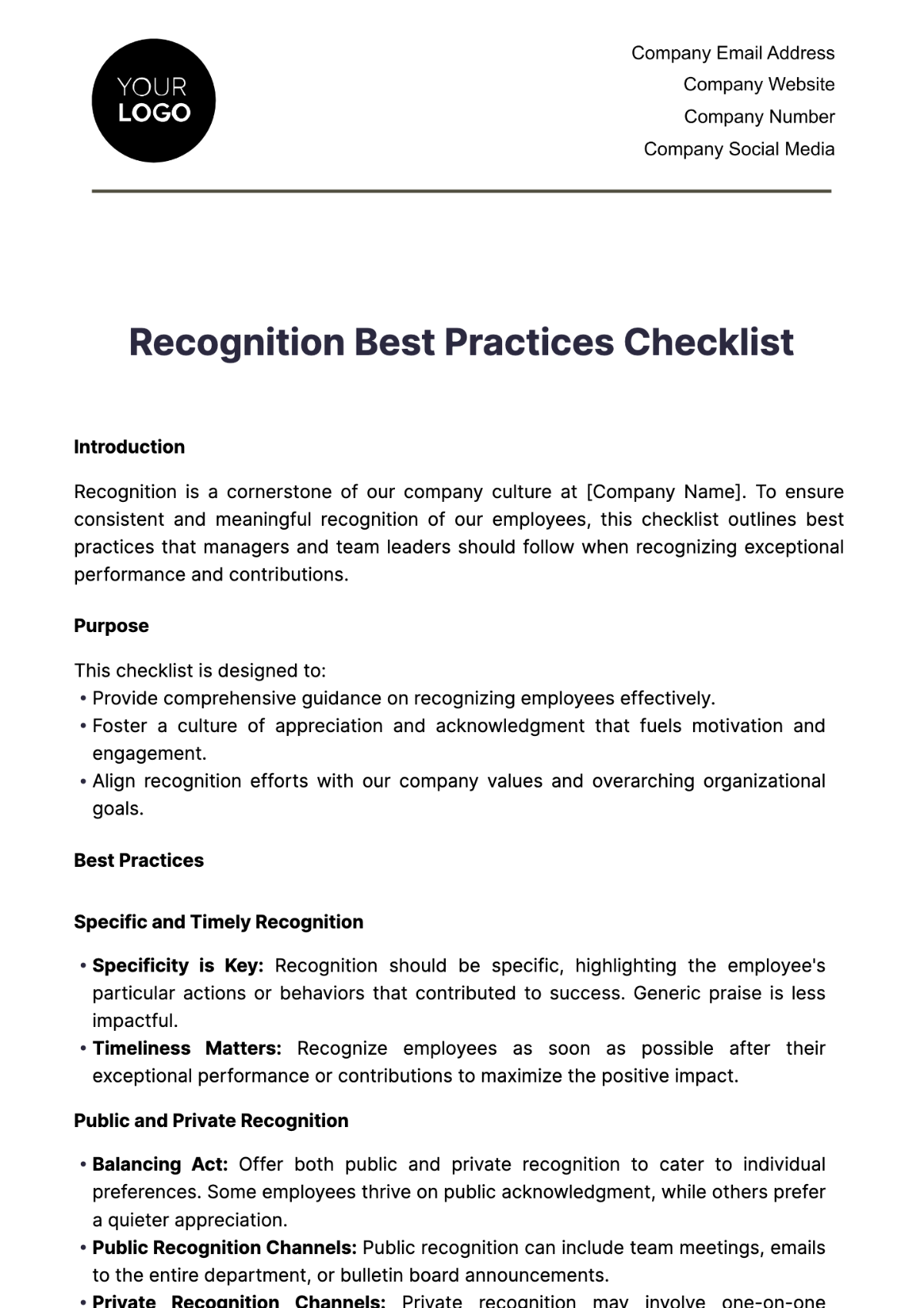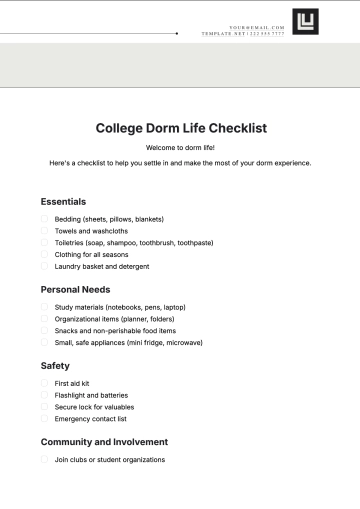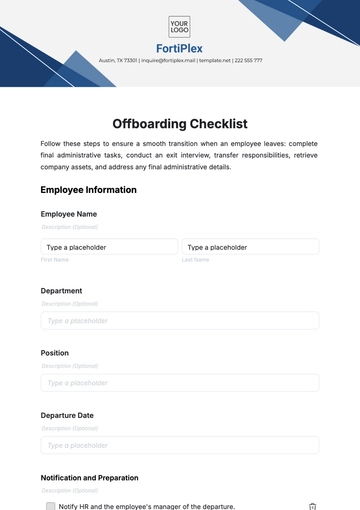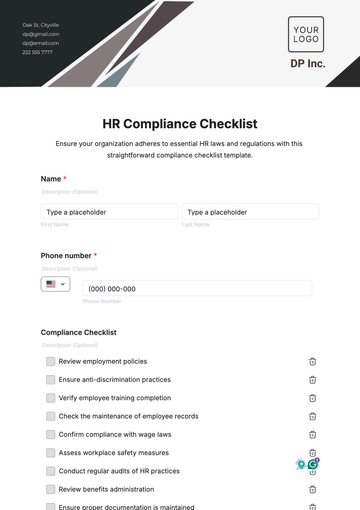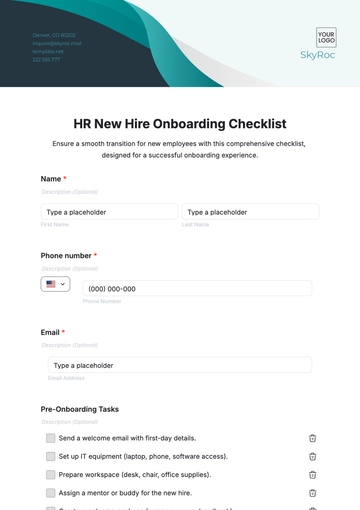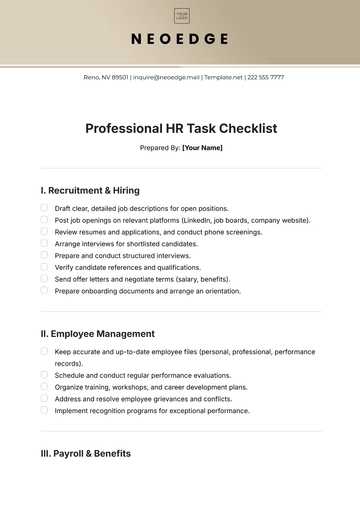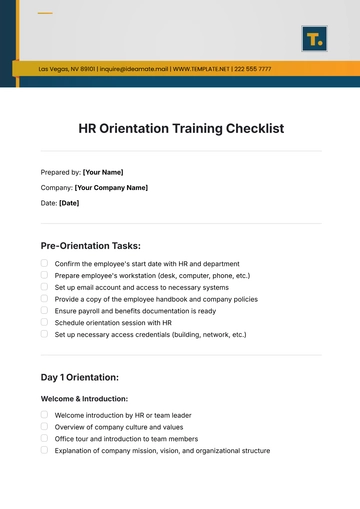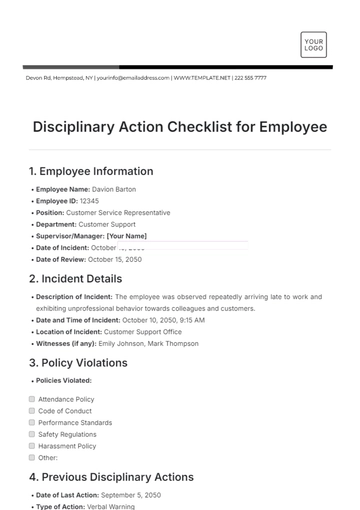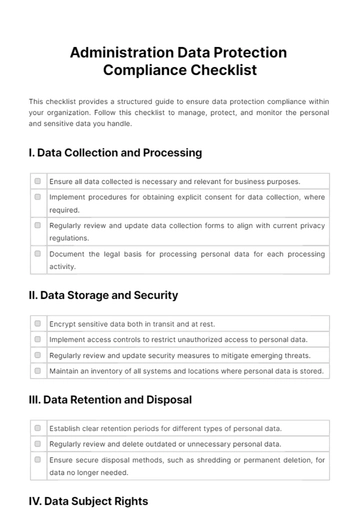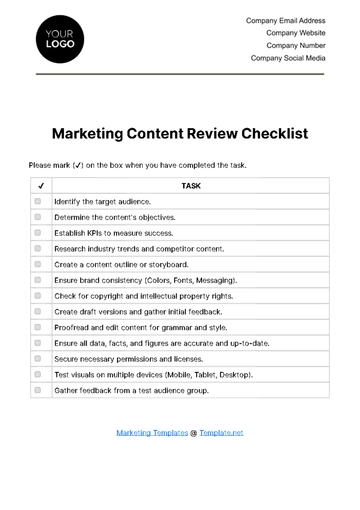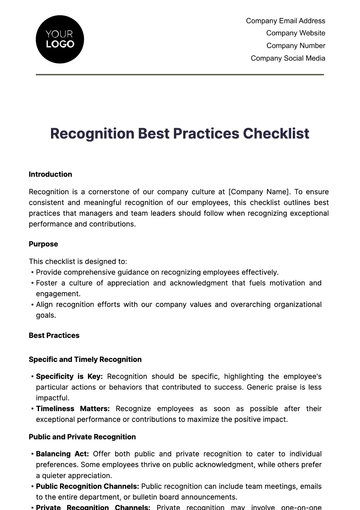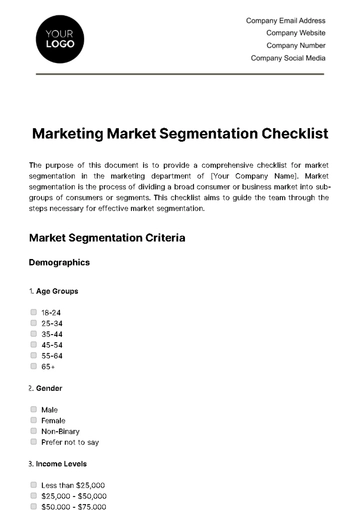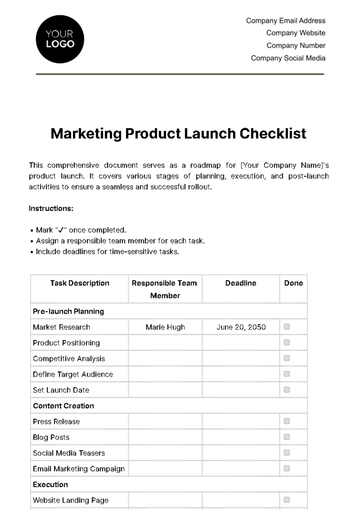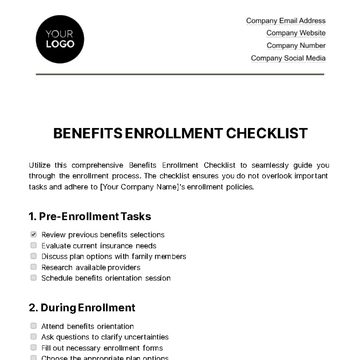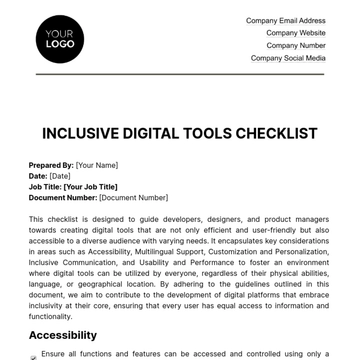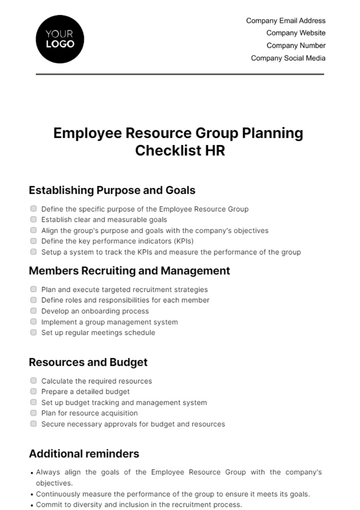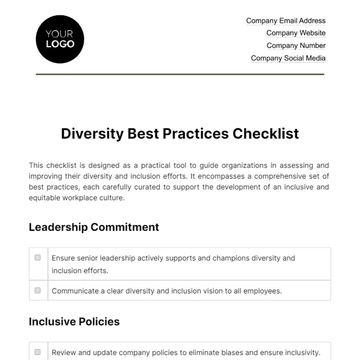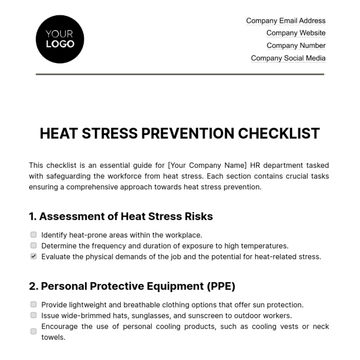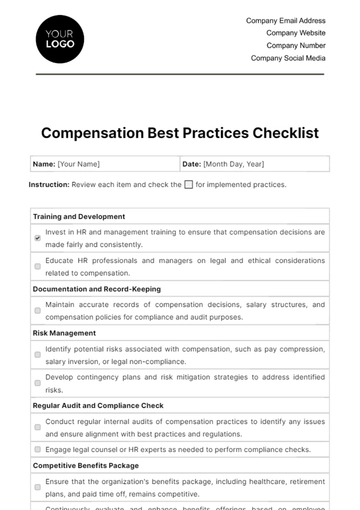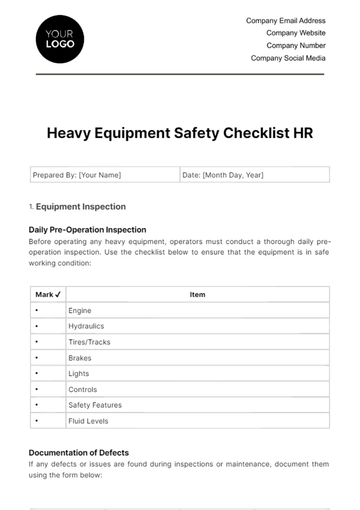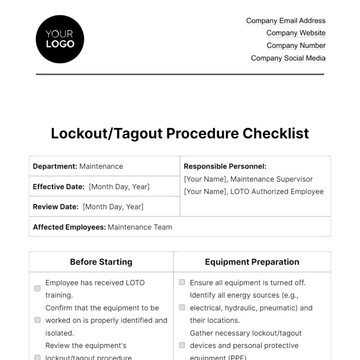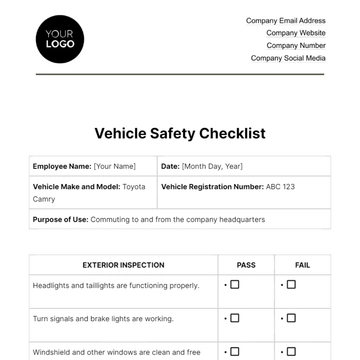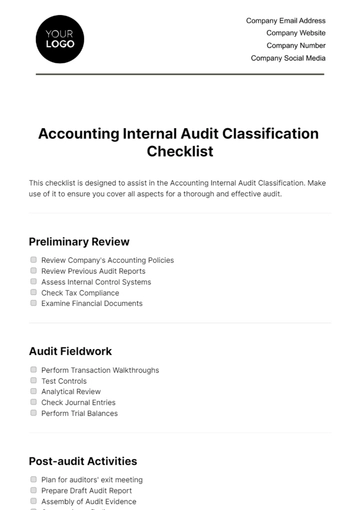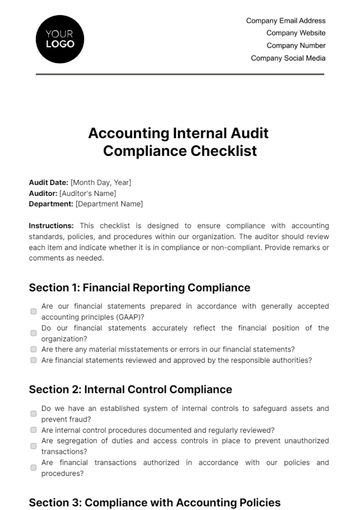Recognition Best Practices Checklist
Introduction
Recognition is a cornerstone of our company culture at [Company Name]. To ensure consistent and meaningful recognition of our employees, this checklist outlines best practices that managers and team leaders should follow when recognizing exceptional performance and contributions.
Purpose
This checklist is designed to:
Provide comprehensive guidance on recognizing employees effectively.
Foster a culture of appreciation and acknowledgment that fuels motivation and engagement.
Align recognition efforts with our company values and overarching organizational goals.
Best Practices
Specific and Timely Recognition
Specificity is Key: Recognition should be specific, highlighting the employee's particular actions or behaviors that contributed to success. Generic praise is less impactful.
Timeliness Matters: Recognize employees as soon as possible after their exceptional performance or contributions to maximize the positive impact.
Public and Private Recognition
Balancing Act: Offer both public and private recognition to cater to individual preferences. Some employees thrive on public acknowledgment, while others prefer a quieter appreciation.
Public Recognition Channels: Public recognition can include team meetings, emails to the entire department, or bulletin board announcements.
Private Recognition Channels: Private recognition may involve one-on-one conversations, handwritten notes, or personalized emails.
Frequency of Recognition
Regularity is Key: Recognize employees regularly, not just during annual reviews. Consistent recognition maintains morale and reinforces positive behaviors.
Informal Recognition: Implement a system for ongoing, informal recognition, such as a "kudos" platform or a dedicated recognition channel on your internal communication platform.
Inclusive Recognition
Across the Board: Recognize employees at all levels and from all departments. Exceptional contributions can come from anywhere in the organization.
Equity and Fairness: Ensure that recognition efforts are equitable and not biased towards specific groups, promoting a diverse and inclusive recognition culture.
Peer-to-Peer Recognition
Encourage Peer Recognition: Actively encourage employees to recognize their colleagues. Peer recognition fosters a sense of camaraderie and teamwork.
Peer Recognition Program: Consider implementing a peer recognition program where employees can nominate and acknowledge their peers for exceptional contributions.
Tangible and Intangible Rewards
Reward Variety: Offer both tangible rewards gift cards, trophies, or certificates, and non-tangible rewards (e.g., verbal praise, shout-outs in meetings).
Personalized Rewards: Tailor the reward to the individual's preferences whenever possible. This shows that recognition is thoughtful and meaningful.
Customized Recognition
Personalization Matters: Customize recognition to align with the employee's personality and preferences. Understanding what type of recognition makes each employee feel valued is crucial.
Personal Touch: Go beyond generic recognition gestures; consider personal touches like handwritten thank-you notes or team celebrations based on individual interests.
Alignment with Company Values
Values-Driven Recognition: Ensure that recognition efforts align with the company's core values and mission. Recognize behaviors that exemplify these values and reinforce them.
Value Reinforcement: Use recognition as an opportunity to reinforce the importance of these values to the entire team.
Consistency Across Teams
Promote Consistency: Promote consistency in recognition practices across all teams and departments to maintain fairness.
Knowledge Sharing: Share best practices and success stories of recognition within the organization through internal communication channels, fostering a culture of learning and improvement.
Feedback and Follow-up
Seek Input: Continuously seek feedback from employees on the recognition process. Understand what forms of recognition resonate most with your team.
Follow-up and Engagement: After recognition, follow up with recognized employees to gauge their satisfaction and engagement. It's an opportunity to learn and build on what works.
Conclusion
By following these comprehensive best practices, we can create a culture of appreciation and acknowledgment that motivates and inspires our employees. Recognition is a powerful tool for boosting morale, engagement, and productivity at [Company Name]. It's not just about saying "thank you" but about creating a workplace where employees feel valued, heard, and motivated to excel.
Contact Information
For questions or further guidance on recognition best practices, please contact the HR department at [Company Email] or [Company Number].
HR Templates @Template.net.
